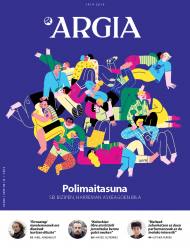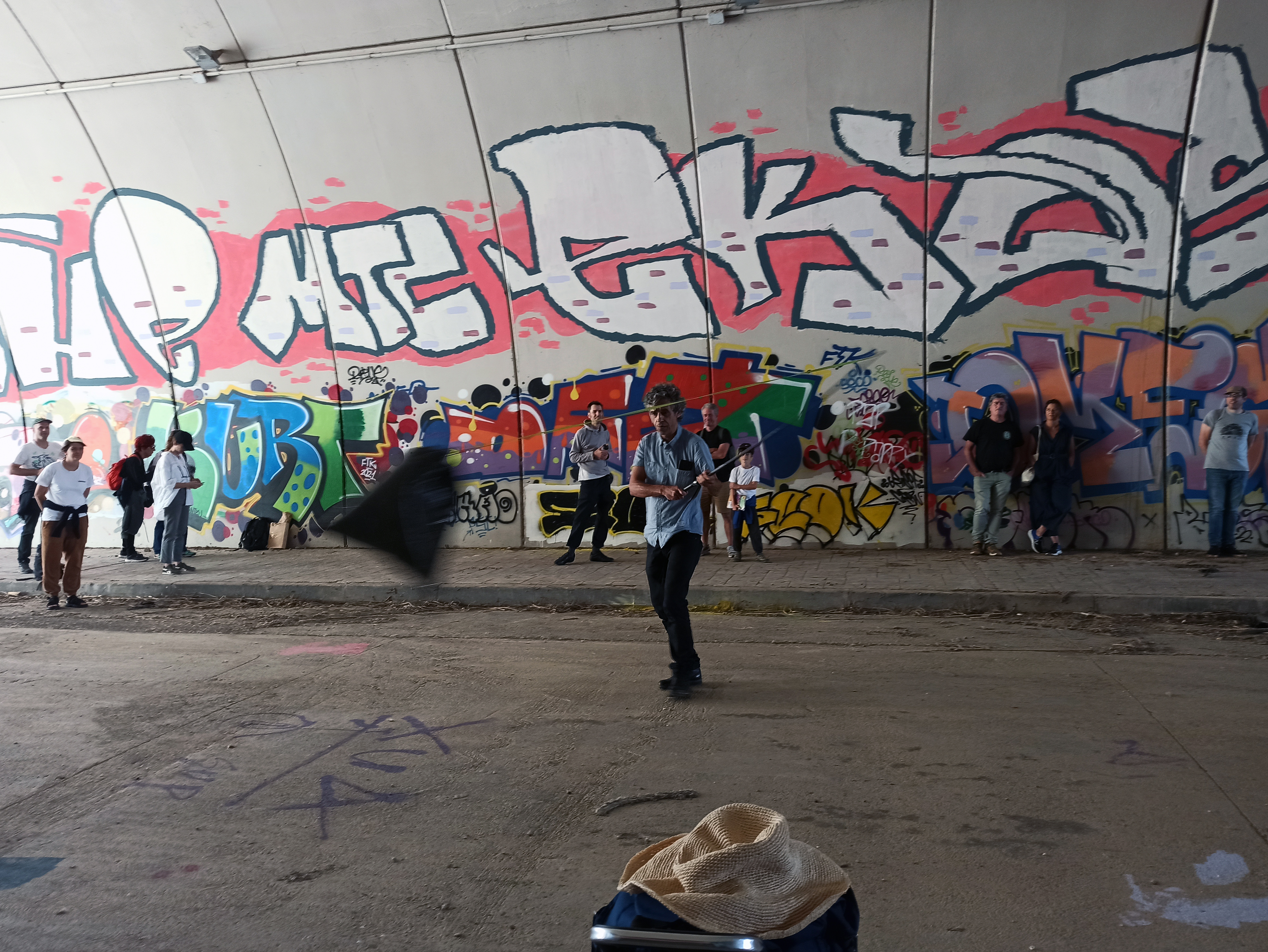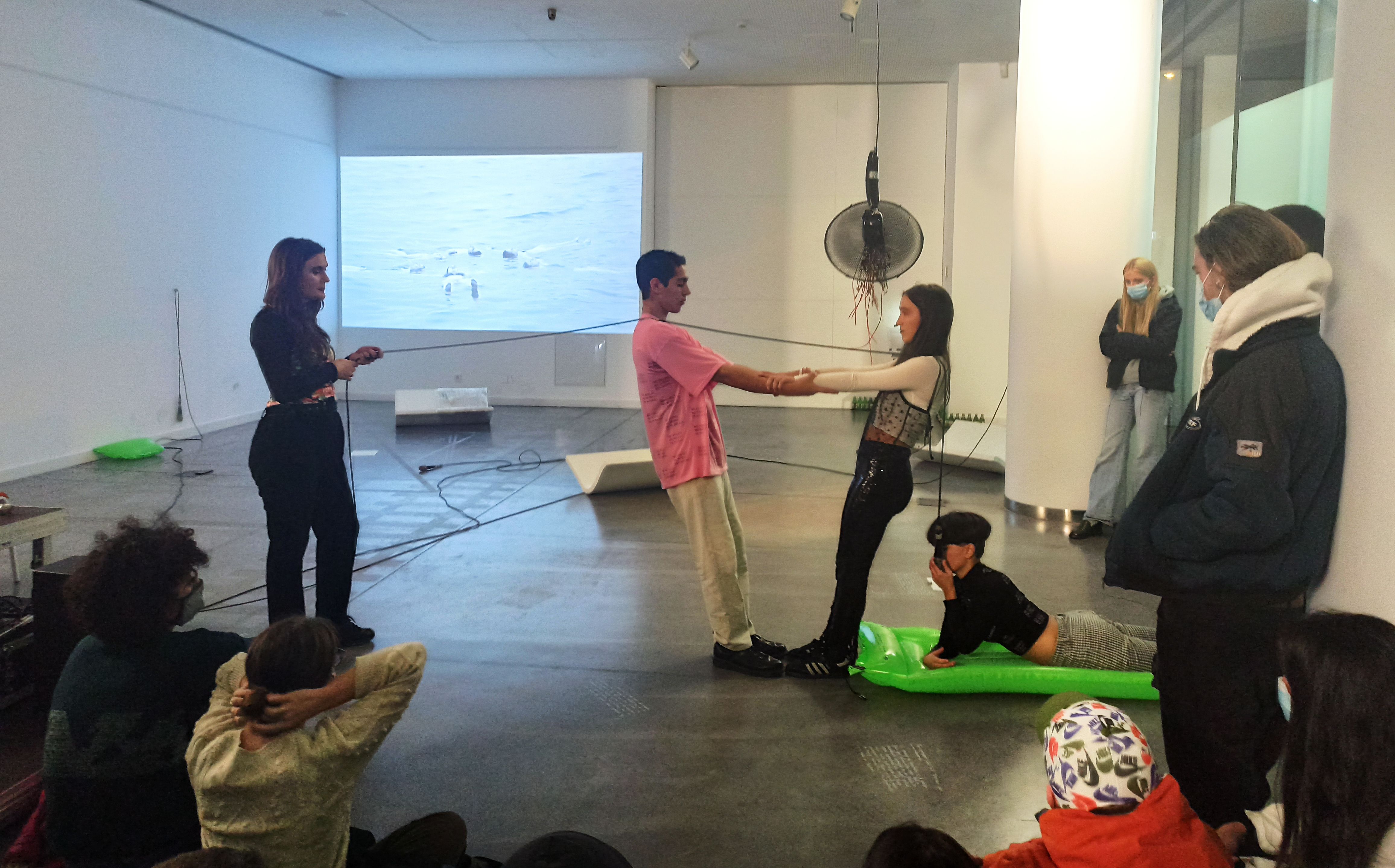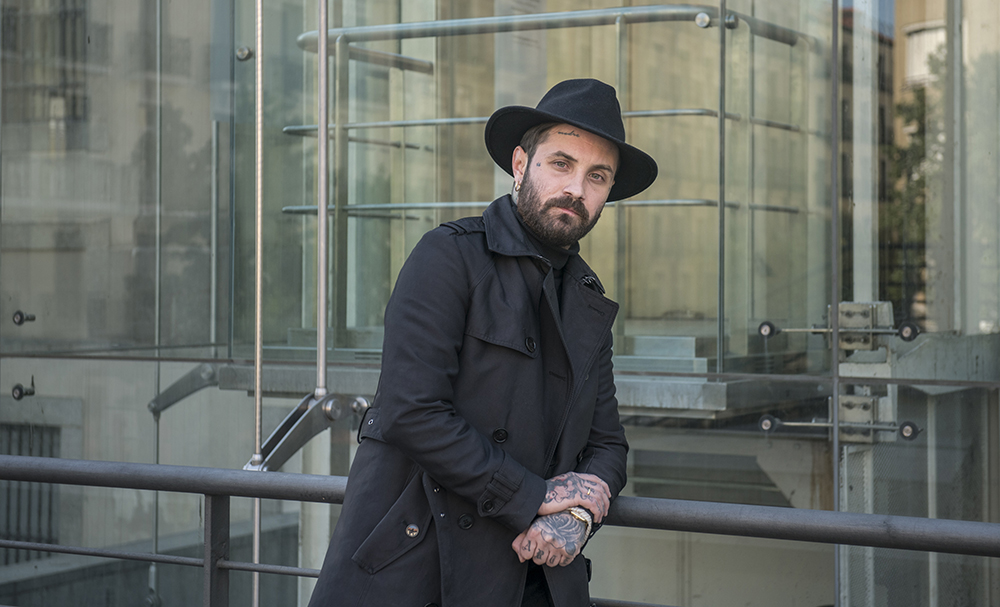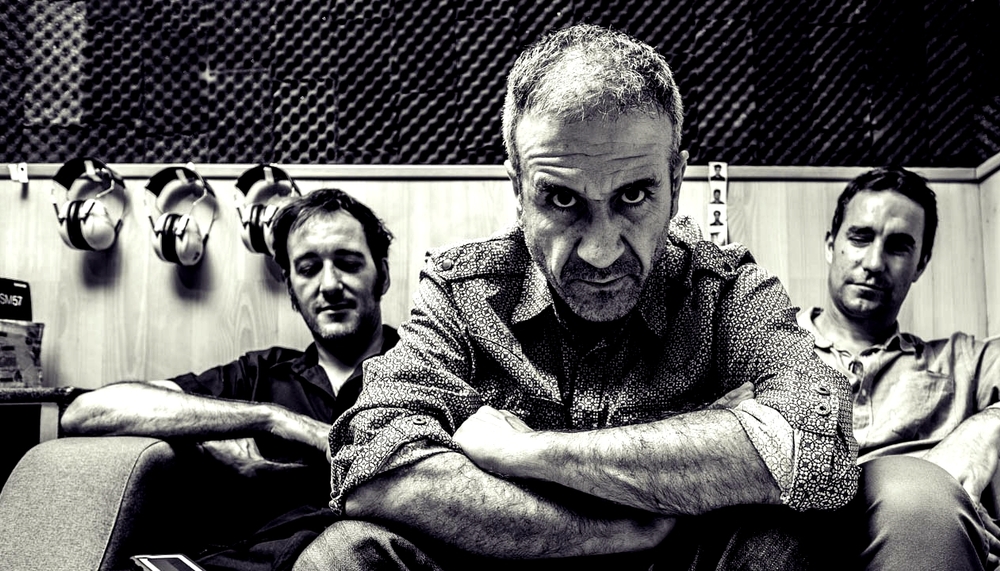"Performance that is not traversed by life has no interest"
- Esther Ferrer (Donostia-San Sebastian, 1937) is walking with her long strides through the exhibition hall. He works on the exhibition that will take place in Tabakalera between 5 April and 26 May, providing a selection of his activities from the 60s to the present and presenting his new work. The Donostian artist established in Paris has pioneered the world of performance with a staging of the body and a radical feminist attitude to understanding life and art. We have had the opportunity to talk to Ferrer about various issues that have already become milestones in his extensive artistic career.
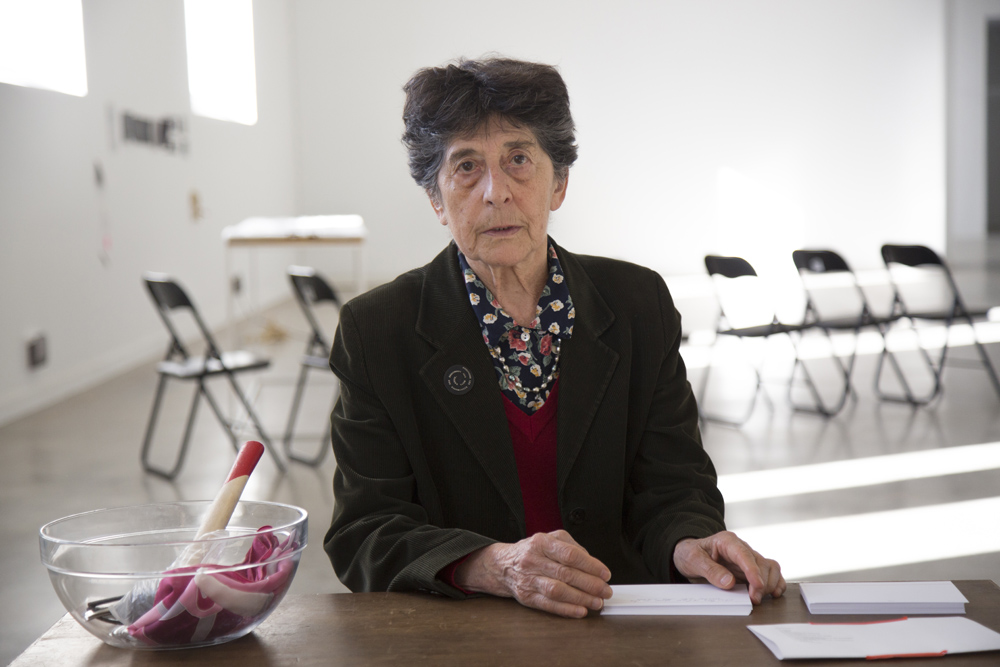
There is a work from 1967, Biography for an exhibition in which a banner you have set contains: “Build installations, work with photographs, create objects, projects and above all actions.” Would you still keep that curriculum today?
At that time, I mainly performed activities, participated in few exhibitions, some of the women's exhibitions or in collective projects, but what I liked the most was doing activities, and that is still the case. I like the unenduring nature of the actions and they leave no trace. You don't have to transport anything, you think of the action, you do it, you end it and you go as you have come. That simplicity attracts me.
In the mid-1960s, together with the painter José Antonio Sistiaga, he launched an unprecedented pedagogical and artistic project in Euskal Herria, a pilot experimental school of avant-garde character.
Before that, we launched the Children’s Free Speech Workshop in Donostia, and I must confess that the idea came from Sistiaga. Sistiaga had many children and was worried about the education she would give them. Indeed, he wanted to offer his children more open education than there was at the time. At the time they lived in France and there were several methods that proposed new pedagogies such as Freinet, Montessori or Stern. And with the intention of doing something like this, I went to France for training, and then we rented a place in Donostia and we started working. We offered painting classes, and through art, we tried to encourage children to reach the goals they set. We talked a lot with the kids, and I learned a lot from that experience.
Then they set up the Elorrio Experimental School.
We thought bringing what we were doing in Donostia to Early Childhood Education could be a good idea, a school that applied the Freinet method. The core of this lesson is to ignite and work the centers of interest of children, that is, to define the interests of the students and to develop the classes from them. I wanted to create a library in Euskera for students to read and write in Euskera. In fact, in those days it was very difficult to find books written in Basque. It was an enriching experience, we had a lot of students, but it certainly didn't last long.
Jorge Oteiza was also walking around, right?
Oteiza came a couple of times and we were very encouraged to follow, he liked what we were doing.
Years later you met the members of ZAJ in Donostia.
Indeed, Sistiaga himself said to me: “Some friends who do very rare things come to Donostia and need a woman to do an action. You are the one who can do such a thing in this city.” I was encouraged to participate in the activity and at the end they asked me if I would like to work with them. I also accepted this on condition that I had the freedom to do what I wanted. They didn't hinder me.

You've worked together for 30 years. What memories do you have?
Teamwork has advantages and drawbacks, but we were very respected and never censored. We did not create together, each one had his works and his actions, and his authorship was respected. If the activity required it, we were involved with the other colleagues. The truth is that the experience was very good, we traveled a lot and met a lot of people along the way.
In 1973, John Cage organized a tour around the United States. What was this experience like?
Cage saw our work at the 1972 Pamplona Meetings and immediately told us that what we did “the Americans had to know it”. We thought the Americans would be sick of seeing things like this, but the truth is that a year later we were in the United States, people welcomed us very well and it was noticeable that what we were doing had an impact. Our actions were very related to music, to a large extent we were heirs to Cage and Duchamp, but we had a very simple way to address and problemalize the subject, we worked with nothing, with emptiness.
And in the Spanish State, what was the reception of the ZAJ?
We had reactions of all kinds, some laughed at us, others got angry, there were those who looked at us with curiosity…
Here, the activities were called concerts. Why?
As Cage said, it was all music, the sound was music, the noise was music and the silence was also; that's why our activities could be considered concerts. On the other hand, during Franco, concerts were the only discipline that did not pass through censorship. Then it happened that people thought they came to see a violin concert and suddenly met one of our activities [laughs]. But there was never a censorship.
"Society is changing because women are changing, the real change is ours."
Following the string of music, you also call “sheet music” to the patterns of your actions.
I lived surrounded by musicians, Juan [Hidalgo] and Walter [Marchetti] from ZAJ were musicians, and my husband [Tom Johnson] is a composer, so I guess the idea would have come from there. When I have an idea, the first thing I do is sign up, and then I structure that idea. I put it in a space, I think about the movements that it's going to have, I give it a duration, a certain rhythm, and all of this I write down. I also draw in these sheet music some of those pictograms that the gymnastics teacher had drawn to us at school, and I have a lot of fun doing it, but I always do it in a very simple scheme. The score is the starting point for all action, then I can change it to infinity, make a lot of variations, but I always respect the idea. If a single idea is enough to make a performance, I'm not going to introduce two ideas. I am very minimalist in that respect.
Time is also of great importance in his work, it seems to be a physical thing.
For me, time is one more element, like a raw material, a physicist, a table or a chair. We don't know what time is, nobody knows, and I want us to realize it, the time that passes, the moment. In fact, the moment we are living will never be repeated again. To do an action or a performance is to create a moment in which we will live together. And in that sense, for me, performance that is not traversed by life has no interest.
You also have long-distance works closely related to mathematics, such as Poem of Prime Numbers or Pi. There seems to be a point of obsession with mathematics in your work.
Poem of prime numbers is a project that I've been working on since the 1970s. I love prime numbers. Because nobody knows if they're infinite or if they're done, and I like to prove that more and more numbers are being reached, more intervals are being formed between prime numbers. And I'm trying to move these research into a plastic language, as in my soil work for Tabakalera. I have a similar obsession with the Pi number. Will the time come for that long decimal place to end? As Einsten said, infinity is a bit long, especially towards the end.
On 8 March, thousands of women have taken to the streets to protest the attacks. You've always claimed you're a passionate feminist. How do you see the current situation?
I always say that as long as necessary I will continue to be a feminist. There is now a strong reaction to women’s rights, and we must therefore be clear and intellectually prepared to see where the enemy comes from. In recent years feminism has received a global scale and man is staggered by fear of losing his power; and the reaction to that fear can be of great violence.
Women made a deep reflection about our situation since the 1960s. Why has this domain lasted so long? Why have we been complicit in all this? Why have we swallowed it? You start to reflect, to draw conclusions and to make some attitudes intolerable, to break with some aesthetic stereotypes tax and to break with some models that we have read as natural. We talked a lot about it, we organized assemblies and meetings and we spoke with total freedom.
What about men instead…?
Unfortunately, men have not yet carried out this exercise. They don't talk about machismo, they haven't reflected on their condition yet. If men come to have the humility that we had one day and talk to each other and see how their privileges affect women, then they will start to change things. In addition, they need to act quickly. Because those in power are going to start changing the laws that directly affect women's rights, and if men do nothing, if they do not react, they will be real culprits and accomplices. I believe that society is changing, because women are changing, the real change is ours.
The bridge marks the border between two worlds. One side is the road leading to Bilbao. Nothing else, nowhere. The bridge is a customs between the known world and the liminal zone. We cross it underneath as if it were a cement portal that is going to take us to another... [+]
Someone screams inside the room, yells inside the head. There are six people in the rooms and halls of a building, fleeing from each other, talking about each other. Six people staring at lions without being able to go out into the street. Fear is the most repeated idea and word... [+]









